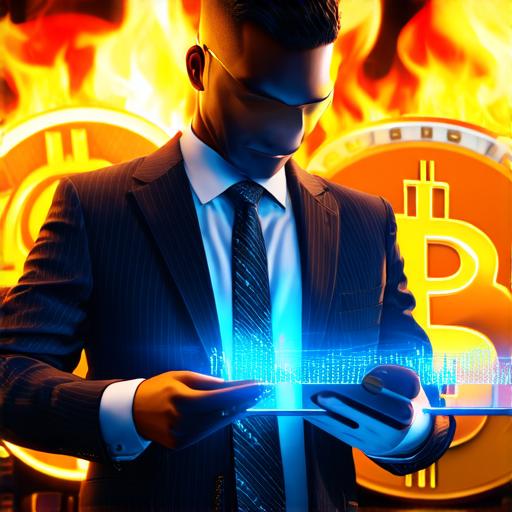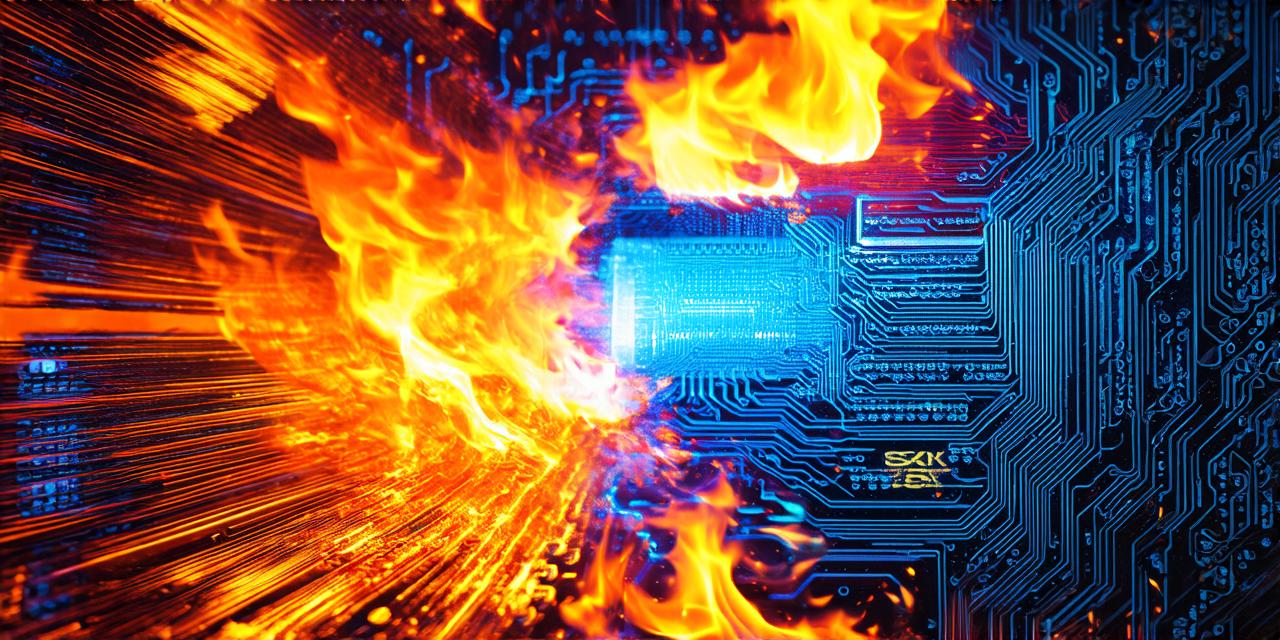Cryptocurrency is a digital asset that uses cryptography for security. It’s an alternative form of currency that operates on a decentralized network, rather than a central bank. The most well-known cryptocurrency is Bitcoin, but there are many others, such as Ethereum, Litecoin, and Ripple.
One of the most important things to understand about cryptocurrency is that it can be burned. Burning refers to the process of destroying a certain amount of cryptocurrency in order to generate new tokens or coins. This process is known as “proof-of-burn” (POB) and it’s used by some cryptocurrencies, such as Ripple, to validate transactions and secure the network.
What is Burning Cryptocurrency?
Burning cryptocurrency refers to the process of destroying a certain amount of coins in order to generate new tokens or coins. The purpose of burning cryptocurrency is to reduce inflation, increase scarcity, and improve the overall security of the network.
When a cryptocurrency’s value increases, it becomes more attractive for speculators and investors to buy and hold onto it. This can lead to inflation, where there are too many coins in circulation relative to their demand. Inflation can reduce the value of the currency and make it less useful as a medium of exchange.
Burning cryptocurrency helps to combat inflation by reducing the supply of coins in circulation. By destroying a certain amount of coins, the network reduces its overall inflation rate, making the currency more stable and valuable.
Why is Burning Cryptocurrency Important?
Burning cryptocurrency is important for several reasons. Firstly, it helps to combat inflation and make the currency more stable. As we mentioned earlier, when a cryptocurrency’s value increases, it can lead to inflation. Burning cryptocurrency reduces the supply of coins in circulation, making the currency less attractive for speculators and investors, which reduces inflation.
Secondly, burning cryptocurrency helps to improve the security of the network. By reducing the number of coins in circulation, the network becomes less vulnerable to attacks. Additionally, burning cryptocurrency provides an incentive for miners to validate transactions and secure the network against attacks.
Finally, burning cryptocurrency can increase the value of the currency. By reducing inflation and improving security, the currency becomes more valuable as a medium of exchange. This can attract more investors and speculators to buy and hold onto the currency, which increases its value even further.
How Does Burning Cryptocurrency Work?
Burning cryptocurrency is typically done through a process called “proof-of-burn” (POB). POB is an alternative consensus algorithm that uses burning as a way to validate transactions and secure the network. In POB, miners are rewarded with new tokens or coins for validating transactions, but they also have to burn a certain amount of coins in order to receive those rewards.
The exact process of burning cryptocurrency varies depending on the cryptocurrency being burned. For example, Ripple uses POB as a way to validate transactions and secure the network. In Ripple’s case, miners are rewarded with XRP tokens for validating transactions, but they also have to burn a certain amount of XRP tokens in order to receive those rewards.
Risks and Benefits of Burning Cryptocurrency
Burning cryptocurrency has both risks and benefits. One of the main benefits is that it can help to combat inflation and make the currency more stable. However, burning cryptocurrency can also reduce the value of the currency if done excessively.
Additionally, burning cryptocurrency can increase the risk of centralization, where a small group of individuals or organizations control the majority of the supply.

Risks and Benefits of Burning Cryptocurrency
Burning cryptocurrency has both risks and benefits. One of the main benefits is that it can help to combat inflation and make the currency more stable. However, burning cryptocurrency can also reduce the value of the currency if done excessively.
Additionally, burning cryptocurrency can increase the risk of centralization, where a small group of individuals or organizations control the majority of the supply.
Tips for Safely Burning Cryptocurrency
If you do decide to burn cryptocurrency, here are some tips to help you do it safely:
- Research the cryptocurrency before burning it. Make sure you understand how the cryptocurrency works and what the potential risks and benefits are.
- Burn only a small amount of coins at a time. Burning too many coins at once can have unintended consequences, such as reducing liquidity or creating market manipulation.
- Use reputable sources for information about burning cryptocurrency. Be cautious of individuals or organizations who claim to have exclusive knowledge or access to information about burning cryptocurrency.
- Consider using a decentralized exchange (DEX) to burn your coins. DEXs are more secure and less vulnerable to hacking than centralized exchanges, making them a safer option for burning cryptocurrency.
- Be aware of the potential risks associated with burning cryptocurrency. As mentioned earlier, burning cryptocurrency can have unintended consequences, such as reducing liquidity or creating market manipulation. Make sure you understand these risks and are willing to accept them before burning your coins.
Case Study: Ripple’s Burning Process
Let’s take a closer look at Ripple’s burning process as an example of how cryptocurrency can be burned safely.
Ripple uses POB as a way to validate transactions and secure the network. When a miner validates a transaction, they are rewarded with XRP tokens. However, in order to receive these rewards, they also have to burn a certain amount of XRP tokens.
The burning process is done automatically by Ripple’s consensus algorithm. When a new block is added to the network, a certain percentage of the miners’ rewards are burned. For example, if a miner is rewarded with 100 XRP tokens for validating a transaction, they will have to burn 10 XRP tokens in order to receive those rewards.
Ripple’s burning process is designed to be fair and transparent. The exact amount of coins that are burned is publicly disclosed on Ripple’s website, making it easy for users to track the process. Additionally, Ripple has strict rules in place to prevent abuse or manipulation of the burning process.
Conclusion
Burning cryptocurrency can be a useful tool for combatting inflation and improving security on a network. However, it is important to understand the risks and benefits of burning cryptocurrency before doing so. By following these tips and using reputable sources for information, you can safely burn your coins and potentially benefit from the process.
